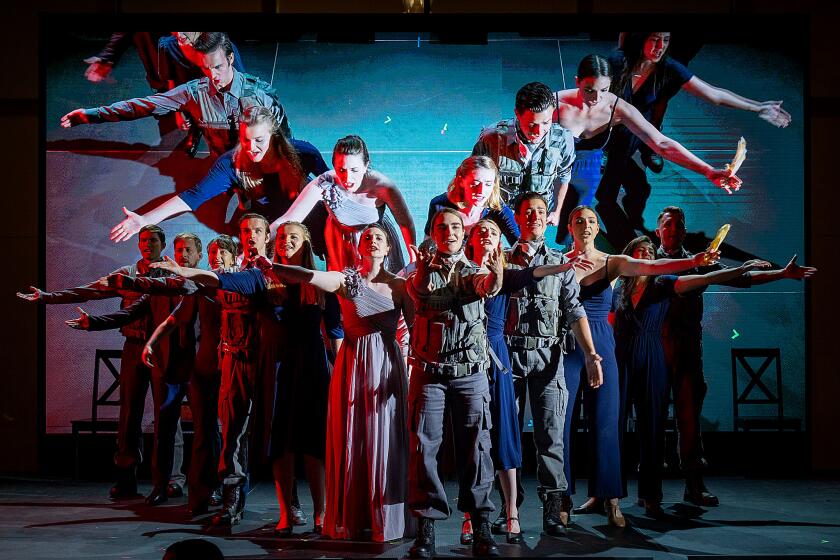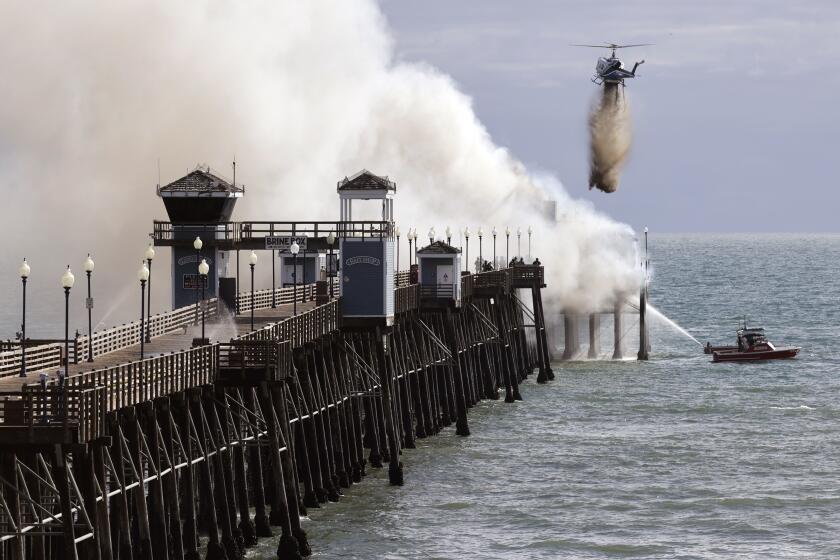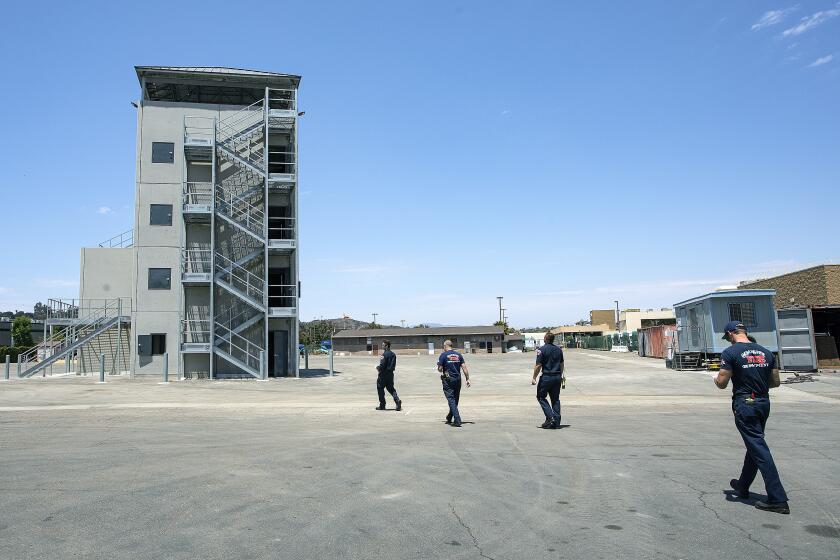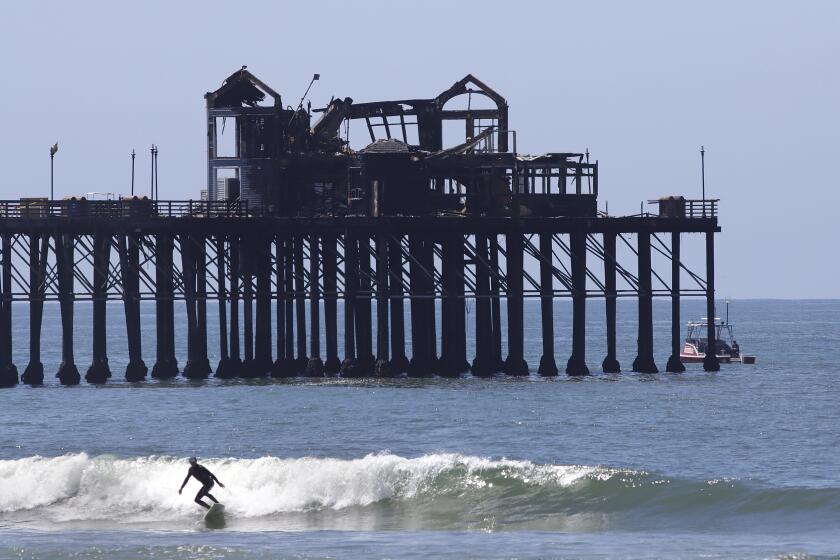Oceanside action sports athlete is the world’s No. 1 wingsuit flyer

Australia native Chris Geiler, 41, reaches speeds up to 200 mph as he air-glides 10,000 feet in the air
If you ever wondered what it feels like to jump out of a plane and free-glide through the sky in a kite-like wingsuit at 200 miles an hour, Chris Geiler is the best person to ask.
Last month, the 41-year-old Oceanside resident won the global championship as the No. 1 individual wingsuit performance flyer at the 2021 World Parachuting Championships in Russia. And with his two teammates, Joe Ridler and Alexey Galda of Chicago, he also earned the team wingsuit gold medal for the United States.
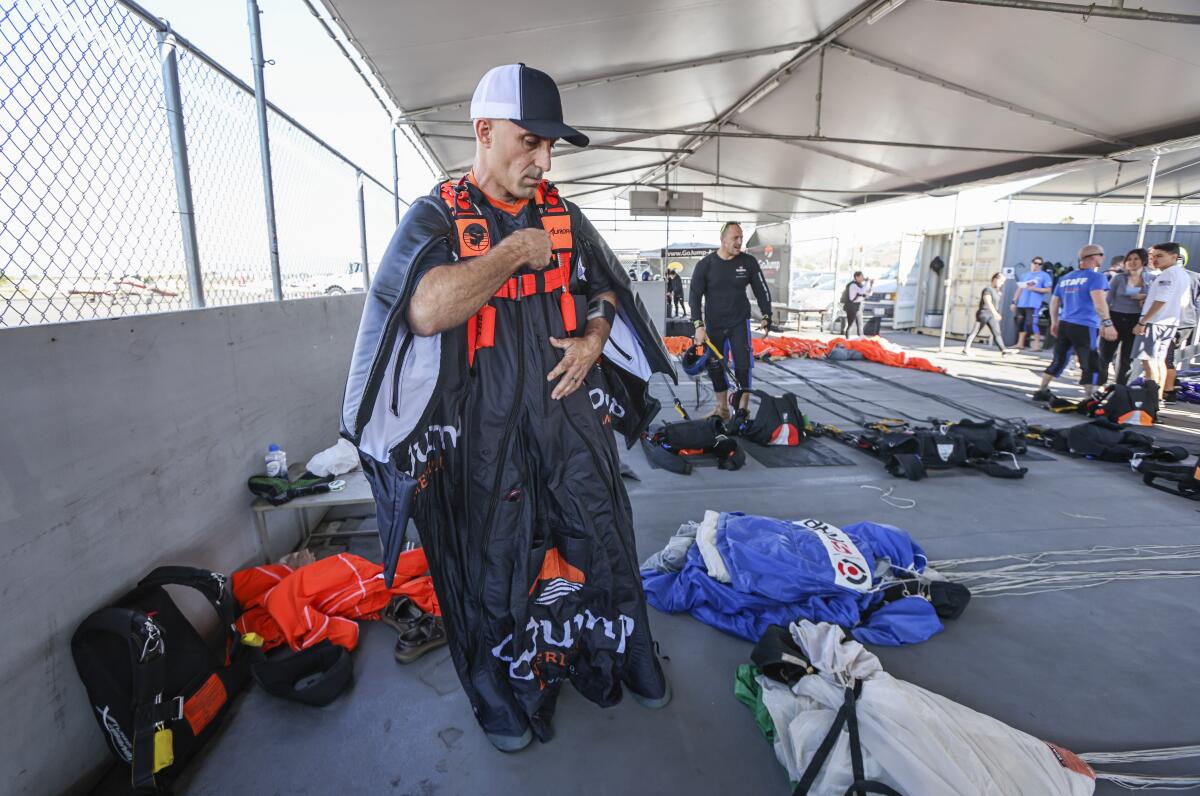
Geiler describes the sensation he feels as he soars through the sky at 4,000 to 12,000 feet as intense, exciting and a little nerve-wracking, since it’s very windy up there and a challenge to stay in control. But the married dad — who works full-time for GoJump Oceanside at the Oceanside Municipal Airport — said what drives him most isn’t the fun of flying but his desire to be the best. He first claimed the No. 1 title in 2016 and has spent the past five years working his way back to the top.
“Because of my competitive nature, how I do up there is never good enough. Every run I do, I could have done it better. I’m not finished yet,” he said.
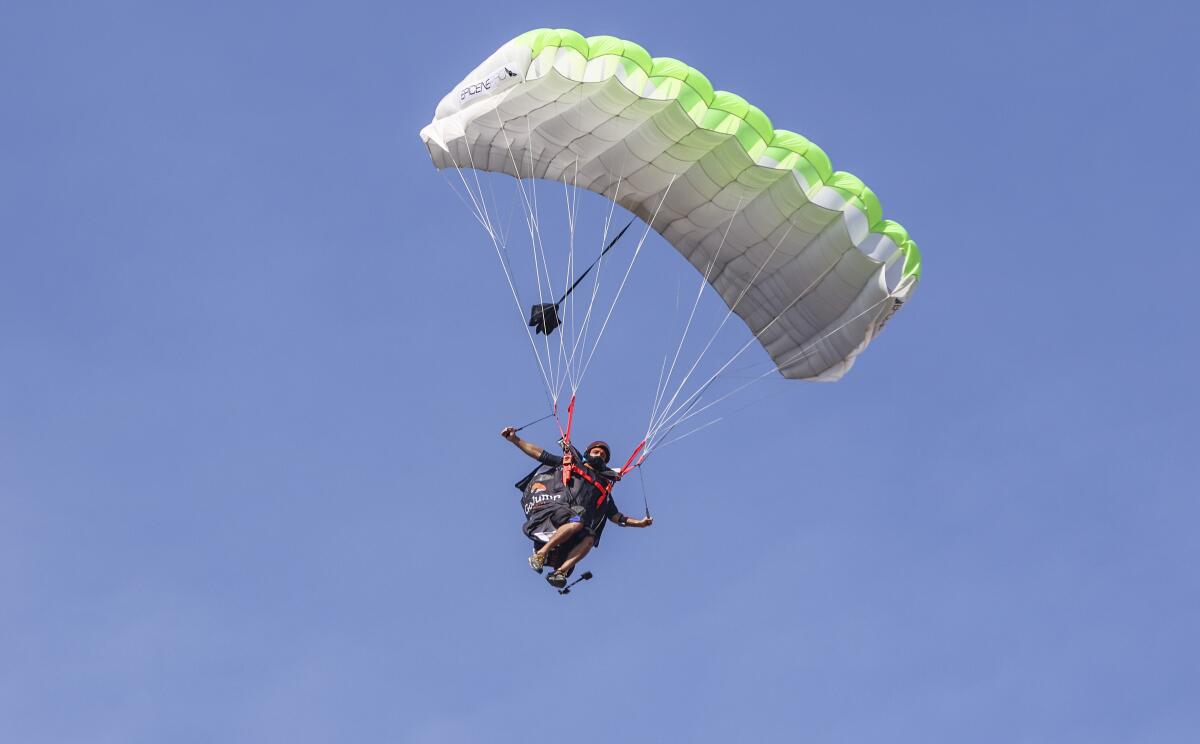
The first wingsuit was created in 1930 by a Los Angeles parachutist who wanted to achieve more horizontal flight during his vertical skydiving. The suit design was inspired by flying squirrels who can glide a surprising distance by catching air in the pocketlike flaps of skin between their arms and legs. The modern jumpsuit came along in the 1990s. Today, the suits are made of materials like Parapack, a durable and densely woven nylon fabric.
When the flyer drops out of a plane, air chambers in the suit fill up with air and give the suit a semi-rigidity that allows the flyer to travel horizontally like a human glider plane for up to three minutes before they open their parachute at 3,000 to 4,000 feet and drift to the ground.
Geiler got into competitive wingsuit flying in 2015. It was the latest in a long line of sports pursuits. He grew up on the southern coast of Australia in the town of Torquay, which is home to the famous surfing spot Bells Beach. He surfed and scuba-dived but his first competitive sport of choice as a boy was running, both cross-country and road racing. He made it to the state finals in running, but problems with his knees led him to switch to competitive bicycle racing.
In high school, he was cycling up to 500 miles every week, with the goal of competing on the European bike-racing circuit. But at the time, cycle-racing was plagued with doping problems and Geiler didn’t want to compete against bikers who cheated. In his early 20s, he took his first skydiving lesson and was hooked. But as much as he enjoyed the sport, it was too expensive to pursue in Australia, so he started traveling.
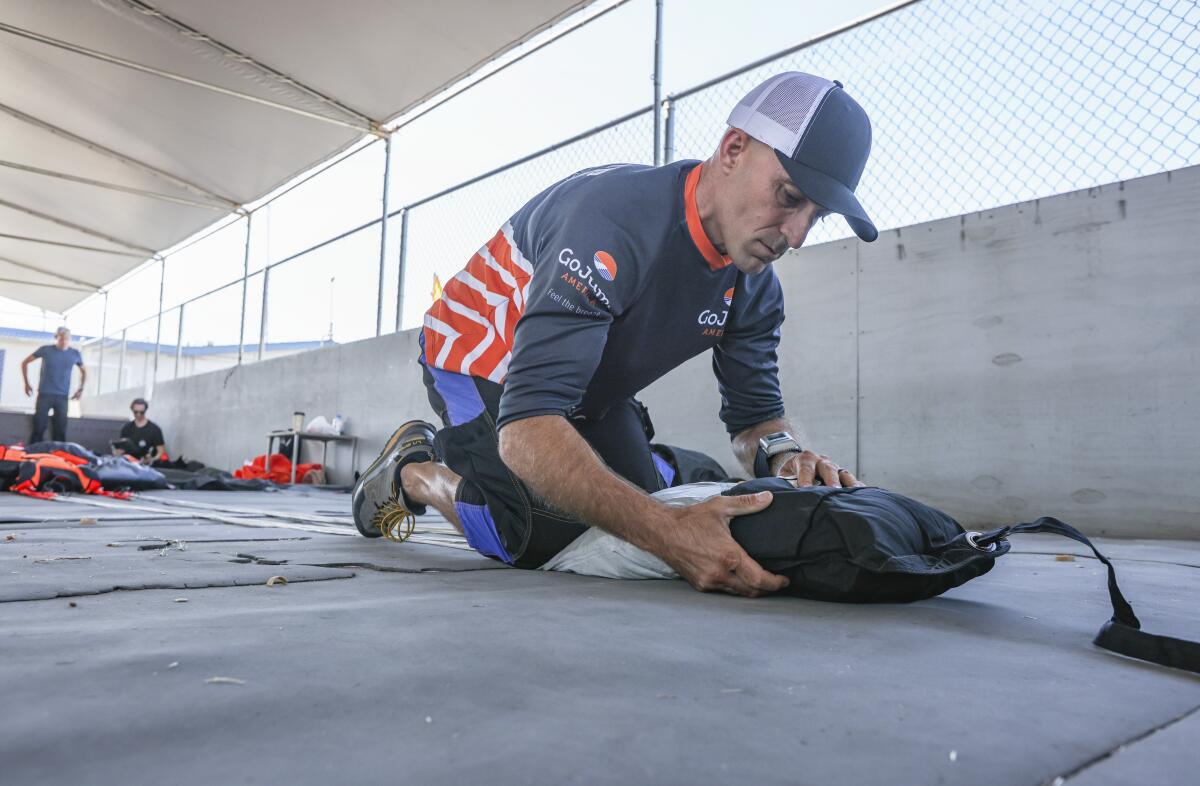
Over the next decade, Geiler spent a snow season in Canada working at a ski resort, bought a van with a friend and drove it across the United States to Florida, and then spent the next six years crewing yachts in the U.S. and Europe. Then in Italy in 2010, Geiler and a friend started training seriously in skydiving and wingsuit flying.
Eight years ago, he moved to California, where it’s easier and more affordable to train in the year-round sunny weather. After six years in Santa Cruz, he moved to Oceanside in 2019 with his wife and son, who will turn 3 next month. Geiler said he prefers Southern California because it’s a major hub for the skydiving industry and he wants his son to grow up next to a beach, like he did.
Wingsuit-flying can be dangerous, but Geiler said jumping from a plane and landing with a parachute is much safer than base-jump wingsuit flying. In his more than 8,000 jumps, Geiler said he’s never had a close call with death.
“I pride myself on being level-headed,” he said.
In competition, wingsuit flyers are judged on three criteria: horizontal distance, flight time and speed. Geiler said in order to inflate the suit, wingsuit flyers dive straight down and can reach a vertical speed of up to 200 miles an hour before leveling off to fly horizontally. In order to fly your body like a glider plane, he said, a wingsuit flyer must learn to understand the physics of wind pressure, lift and other principles.
“It’s like you’re balancing on the fine line between being in control and being out of control,” he said.
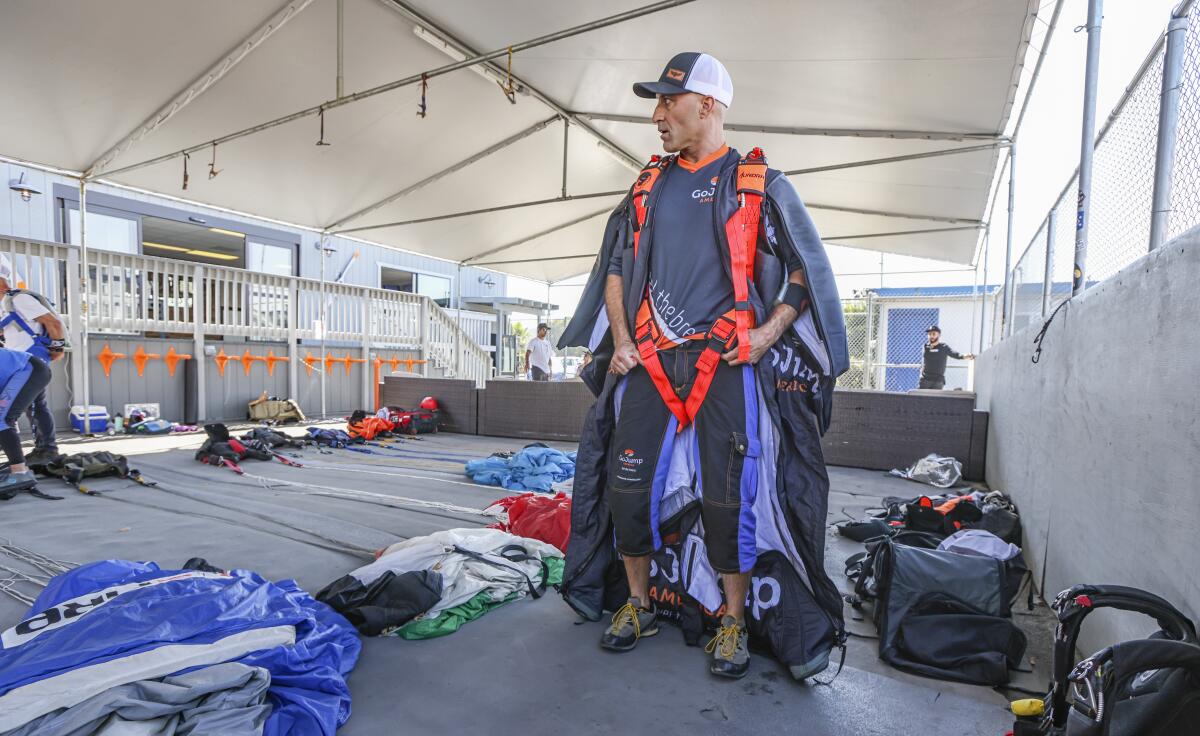
At the 2021 World Parachuting Championships in August, Geiler amassed a near-perfect score of 299.1 total points for distance, speed and time, beating out his nearest competitor, Polish flyer Dawid Winczewski, by more than 10 points. His U.S. teammates, Galda and Ridler, came in third and fifth, respectively, which helped power the trio to the team gold medal ahead of Russia, Poland, Denmark and Finland. The wingsuit performance division had 35 individual flyers from 13 countries.
In order to compete at the international championship, the three flyers who earn the most points at the national level are chosen each year. The next national tournament takes place in Arizona in late October. Unlike many competitive sports, wingsuit flying doesn’t attract many well-heeled sponsors or any federal funding. So Geiler pays for his jumps and training by working at GoJump. He also serves as a test pilot for Squirrel, a Seattle-based wingsuit and parachute maker.
“I like helping consult for them to create new suits,” he said. “They’re always on the cutting edge, and everything we learn there trickles down to create better performance for everyone in the industry.”

Get North County news in your inbox
Top stories from the San Diego North County every Monday, Wednesday, and Friday.
You may occasionally receive promotional content from the San Diego Union-Tribune.




